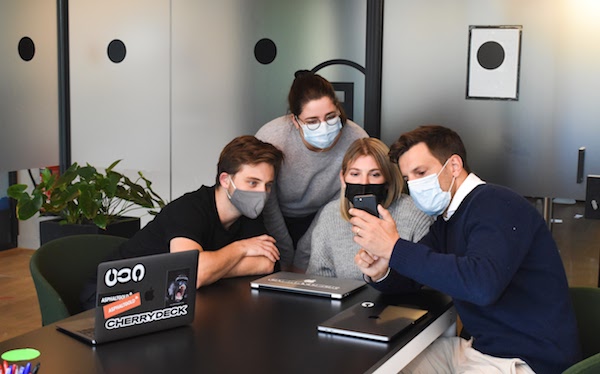
The pandemic has disrupted and reshaped every aspect of life over the past year, and its impact on the world of work has been especially significant.
It is not just where people are having to fulfill their professional responsibilities that has shifted, but also how they go about this, with technology becoming even more essential to organizations of all sizes.
Here is a look at just how much has changed, and what this means for productivity and job satisfaction going forward.
File sharing is key to colleague collaboration.
The idea of a paperless office has been mooted for many years now, but COVID-19 has catalyzed the uptake of this approach to information sharing more effectively than any other market pressure.
Even until relatively recently, team members would often disseminate data to colleagues via USB flash drives, since this was often seen as quicker and more convenient than the alternative. The move to remote working has made cloud-powered file sharing the go-to method, meaning that the pandemic may have killed off portable, physical storage for good.
Furthermore with tools like a free online PDF editor available, it has never been easier to work on important documents in collaborative environments without coming up against compatibility issues. Likewise platforms like Google Docs have introduced more organizations and individuals to the concept of the documents themselves existing in the cloud, and being editable concurrently by multiple users, rather than being stored and saved separately.
COVID-19 has effectively dragged businesses kicking and screaming into the cloud era, promising to boost productivity and grease the wheels of collaboration as a result.
Video conferencing has become the norm.
Another major shake-up brought about by national lockdowns, office closures and travel disruption is that millions of businesses now rely heavily on video conferencing and virtual meeting platforms more than they ever did in the past.
From established solutions like Microsoft Teams to game-changing upstarts like Zoom, such services have proven that all that time and money invested in attending face-to-face get-togethers may have been wasted.
That is not to say that this change in habits has been without its issues; some fear that virtual meetings are still inferior to real-world equivalents because of the psychological impact they have, and the associated productivity problems that can arise. Even so, this is another trend that is here to stay, and as time passes, workers are getting used to this state of affairs, after being initially overwhelmed by it.
Striking a work-life balance is tougher.
One of the biggest problems which employees face in the wake of COVID-19 is that setting suitable boundaries between their work during business hours and their home life outside of this time is difficult.
From a practical perspective, people are having to juggle imperfect domestic arrangements to ensure that they can be as productive as possible during the day while still being able to compartmentalize this part of their lives and enjoy leisure time in the same environment after they clock off each evening.
The emotional toll this takes, and the troubling habits this forms in those who cannot ‘switch off’ when their work laptop is inches away at all times, should not be overlooked. Likewise there are technical limitations to consider, such as connectivity issues and a lack of access to suitably capable hardware, which put home workers at a disadvantage.
Coping with the coronavirus crisis is still an uphill struggle, but there is no doubt that the development of digital technologies over the past three decades has dramatically improved the chances for modern businesses to survive and even thrive.
The post How COVID-19 Is Changing Our Workplace Habits And Productivity appeared first on Young Upstarts.
via https://www.AiUpNow.com
January 7, 2021 at 01:28AM by admin, Khareem Sudlow
